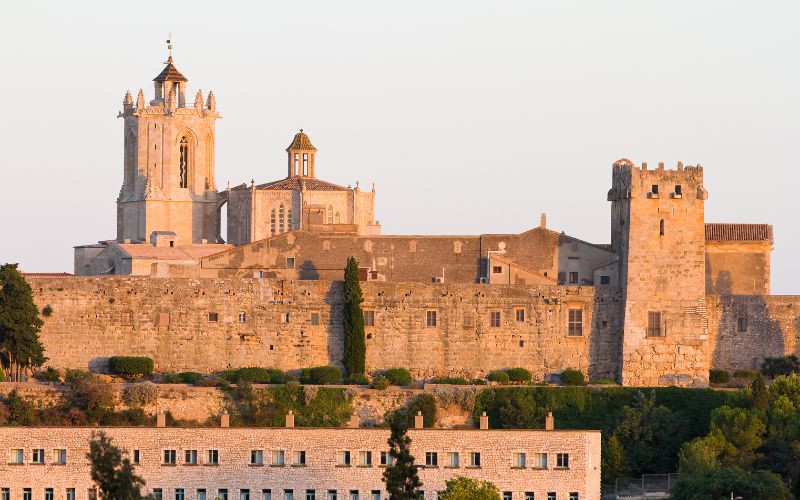
If you plan to visit the province of Tarragona, get ready to discover a land full of contrasts, with idyllic coasts, majestic mountains, rolling vineyards, and an abundance of historical heritage. Today, we introduce you to the ten most spectacular routes to make the most of this Catalan gem.
-
Camino de Ronda (GR-92)
This trail offers unique panoramic views of the Costa Dorada. The stretch between Altafulla and Tamarit is especially popular, combining sea views, ancient defense towers, and serene beaches.
The section of the route between Altafulla and Tamarit is particularly popular and accessible. It starts in Altafulla, a charming coastal town with a golden sandy beach and a well-preserved old town. The path takes you along the coast, passing by the historical Roman Villa of Els Munts, an impressive archaeological site that was once a suburban villa in Roman times.
The highlight of this section of the Camino de Ronda is Tamarit Castle, a breathtaking medieval castle perched on a promontory overlooking the sea. With its towering turrets and scenic location, it’s a perfect spot for photographs or simply admiring the view.
After visiting the castle, you can continue your hike southwards, or take a break and relax on the nearby beach. Regardless of how far you choose to walk, the Camino de Ronda promises an unparalleled coastal hiking experience.
-
El Priorat
El Priorat, a region located in the province of Tarragona, is truly unique, renowned for its production of high-quality wines. Its slate soils, known as “llicorella,” and its distinct microclimate, contribute to creating intense and robust red wines that have gained international recognition.
Starting your journey in the town of Falset, the region’s capital, you can enjoy a wine tasting at the Falset-Marçà Cooperative, a modernist building that also houses the Wine Museum. Here, you can learn about the history of viticulture in the region and sample some of the best wines from the DOQ Priorat.
Don’t miss the trail leading to Cartoixa d’Escaladei, the first Carthusian monastery in the Iberian Peninsula. The monastery is partially in ruins, but its charm and the peace it radiates are captivating. The surrounding landscape is awe-inspiring, with the Montsant mountains dominating the horizon.
Continuing on the route, we recommend visiting Porrera, another picturesque wine-producing village. This town is known for its high-end wines and its stunning natural surroundings. Be sure to stop by one of its wineries, such as Celler Vall Llach.
You can’t leave Priorat without visiting Siurana, one of the most beautiful villages in Spain (although it’s not on the official list, a decision made by the town hall to preserve its sustainability). Siurana was the last Muslim stronghold in Catalonia, and its conquest marked the beginning of the repopulation of New Catalonia. The little village of Siurana retains its medieval charm and its Romanesque church. The setting is breathtaking; below its 700-meter altitude, you can see the Siurana reservoir, the Sierra del Montsant, and the steep hills that attract climbers from all over the world.
-
Vía Verde del Baix Ebre
This 25 km itinerary runs along an old railway line, going through tunnels and bridges with views of the Ebro River and the rice fields surrounding the city of Deltebre.
Your journey starts in the historic city of Tortosa, known for its magnificent cathedral and its beautiful old town. From there, the Vía Verde takes you through orange and olive groves, as well as tunnels carved into rock and ancient railway bridges.
About halfway, you’ll find the natural area of Sebes, a wildlife reserve home to numerous bird species, making it perfect for birdwatching. There’s also an interpretation center where you can learn more about the region’s ecology.
Continuing southward, the route takes you alongside the Ebro River, offering panoramic views of the water and surrounding mountains. In this section, you’ll also get a sweeping view of the Ebro Delta, one of the largest wetlands in Western Europe.
The route ends in the charming coastal town of l’Ampolla, where you can take a dip in the Mediterranean or enjoy a fresh seafood meal in one of the many waterfront restaurants.
-
The Natural Park of the Ebro Delta
The Natural Park of the Ebro Delta is one of the most important ecosystems in the western Mediterranean. Covering an area of more than 320 km², this park stretches along the Tarragona coast and provides a unique and diverse environment of marshes, lagoons, beaches, and dunes.
Your visit can begin at the park’s Information Center, located in Deltebre. Here, you can learn about the delta’s biodiversity and ecology and get information on the various trails and activities available in the park.
One of the Ebro Delta’s main attractions is its birdlife richness. With over 300 recorded species, it’s a true paradise for bird lovers. Don’t miss a visit to the l’Encanyissada lagoon, one of the best birdwatching spots where you can see flamingos, herons, ducks, and many other species.
Lastly, don’t forget to visit the Trabucador Beach, a long strip of sand that juts out into the sea, renowned for its beauty and as a popular kitesurfing spot.
The Ebro Delta Natural Park is a real nature gem. With its rich biodiversity, stunning landscapes, and numerous activities, it offers an unparalleled experience for any nature and outdoor enthusiast.
-
The Cister Route
The Cister Route is a fascinating journey that takes you through history and spirituality, visiting three impressive Cistercian monasteries located in the province of Tarragona: Poblet, Santes Creus, and Vallbona de les Monges.
The Poblet Monastery is undoubtedly one of the most imposing Cistercian monasteries in Europe. Located in the municipality of Vimbodí i Poblet, this UNESCO World Heritage Site invites you to stroll through its vast cloisters and discover the stunning royal tombs.
The Santes Creus Monastery, located in Aiguamúrcia, is another architectural treasure. This monastery currently has no monastic community, allowing freer access to its spaces. Don’t miss visiting its chapel, housing the tombs of Peter III of Aragon and his son James II.
Last but not least is the Vallbona de les Monges Monastery, notable for being one of the few female Cistercian monasteries with a continuous monastic community for over 800 years. It’s a place of peace and tranquility, where you can feel the devotion and contemplation of past centuries.
To make your journey even more enriching and comfortable, we invite you to book guided tours of these majestic monasteries on our website, La Teva Ruta. We’ll guide you through the corridors and histories of these monuments, enriching your visit with facts and anecdotes not found in common guides.
-
Mountains of Prades
The Muntanyes de Prades, located in the province of Tarragona, are a stunning mountain range stretching over more than 300 km², offering a captivating blend of natural landscapes and cultural heritage. Known for its red rocky formations, the area boasts a variety of hiking trails, impressive caves to explore, and numerous routes for climbers of all levels. The medieval town of Prades, situated in the heart of the mountains, is a charming retreat with a castle, an iconic main square, and narrow streets filled with history. Experience Prades with our History and Flavors tour in Prades and Capafonts or with the family-friendly proposal that includes a scavenger hunt in the village “Discover the Secrets of the vermella village.”
Local products, such as hazelnuts, honey, and sausages, are an integral part of the region’s gastronomy and are worth a taste. If you’re passionate about photography, the Muntanyes de Prades make for a spectacular backdrop, especially during sunrise and sunset when the colors of the rocks and forests come alive. In summary, this destination offers a variety of experiences for every taste, whether you’re seeking adventure, tranquility, or a cultural journey.
-
The Camino de Sant Jaume (Way of Saint James)
The Camino de Sant Jaume, also known as the Catalan Way of Santiago, is an ancestral route that has been traversed by pilgrims for centuries on their way to Santiago de Compostela. The route passing through the province of Tarragona offers a mix of rich cultural and natural heritages, connecting destinations like Montblanc, Poblet, and Lleida. Pilgrims enjoy the medieval architecture of Montblanc, visit the impressive Monastery of Poblet, a UNESCO World Heritage site, and immerse themselves in the beauty and tranquility of Tarragona’s landscapes.
Walkers and cyclists embarking on this route enjoy its variety, which includes mountain paths as well as flatter, easier stretches. Along the way, you can appreciate a diversity of landscapes. The Camino de Sant Jaume in Tarragona is more than just a journey; it’s an enriching experience that offers an opportunity to reflect, discover, and savor the beauty of this region.
-
The Via Augusta
The Via Augusta, known in ancient times as the Via Herculea, is the longest Roman road on the Iberian Peninsula, and one of its most notable sections crosses the province of Tarragona. This ancient communication route, which in its entirety connected Rome to Cadiz, holds significant historical and cultural importance. In Tarragona, the Via Augusta invites visitors to step back in time and discover impressive archaeological remains, including bridges, aqueducts, and constructions dating back to the Roman era.
Along the Via Augusta in Tarragona, travelers can enjoy diverse landscapes, from the Mediterranean coast to inland vineyards and mountains. Beyond the archaeological sites, the route is a pilgrimage and adventure path that allows you to discover local gastronomy, traditions, and the cultural heritage of the towns and cities it passes through. It’s a unique experience for history lovers and those looking to immerse themselves in the natural and cultural beauty of this exceptional region.
-
The GR7 through the Sierra de Llaberia
The GR7, a long-distance hiking route that crosses Europe, features an exceptional section in the Sierra de Llaberia, Tarragona. This mountain range, characterized by its limestone rock formations, is renowned for its breathtaking natural beauty and rich historical heritage. Hikers enjoy exploring the region’s charming villages, such as Pratdip and the abandoned town of Llaberia, where remnants of castles, churches, and hermitages tell the story of the area.
From a natural standpoint, the GR7 offers spectacular views of pine and oak forests that cover the mountains and surrounding valleys. Hikers can anticipate a real treat in spring when the wild flora bursts into a variety of colors, and the possibility to spot local wildlife, such as mountain goats, wild boars, and various birds. In essence, the GR7 in the Sierra de Llaberia provides a fulfilling experience for hiking enthusiasts, history buffs, and nature lovers.
-
The Modernism Route in Reus
The Modernism Route in Reus is a fascinating tour of the birthplace of the famous architect Antoni Gaudí. Although Gaudí left no works in Reus, the city stands out for having one of the most important modernist ensembles in Catalonia, with over 26 buildings of this unique architectural style. The route covers several notable modernist buildings designed by Gaudí’s disciples and contemporaries, such as Lluís Domènech i Montaner and Pere Caselles i Tarrats.
One of the most emblematic buildings on the Modernism Route in Reus is the Institut Pere Mata, a former psychiatric hospital designed by Domènech i Montaner. This building stands out for its facade adorned with colorful mosaics and intricate carpentry and ironwork. Other notable buildings include Casa Navàs, a striking mansion with a detailed facade and luxurious interior, and Casa Rull, whose architectural details reflect Gaudí’s influence. The route also includes a visit to the Gaudí Centre, a museum dedicated to the life and work of the famous architect, offering an insightful glimpse into his creative genius.
No matter what type of traveler you are, Tarragona has a route for you. So prepare your comfortable footwear, pack your backpack with water and snacks, and set out to explore the wondrous paths of this beautiful Catalan province. Safe travels!

Guide to Not Missing a Thing
I am MªCarmen Granados, guide at La teva ruta. Would you like me to accompany you on a private tour of Tarragona for your family? If you’re looking for a unique and family-friendly destination in Spain, Tarragona is the perfect place. This city, rich in history and culture, offers a range of attractions that will keep your children engaged and happy throughout a full weekend. Here’s a detailed guide on how you could spend a weekend in Tarragona with kids, accompanied by yours truly, an Official Guide of Catalonia.
Day 1: Exploring Roman History
We start your journey in Tarragona with a visit to the Roman Amphitheater. This majestic structure from the 2nd century is right in the heart of the city and offers a window to the past that will fascinate your children. Imagine the thrilling gladiator battles that took place here, and educate your children about Tarragona’s significance during Roman times.
Later, we’ll take a stroll through the Part Alta, Tarragona’s old town, where the cobblestone streets and ancient buildings provide an authentic medieval atmosphere. Here, you can find the King’s Square, which houses the History Museum of Tarragona. This venue allows you to delve deeper into the city’s rich history, and it’s a perfect spot for kids to learn about Tarragona’s intriguing past.
Discover the details of the guided tour around Tarragona. We offer you a comprehensive guided tour of essential Tarragona so you won’t miss out on anything, allowing you to relish the streets, squares, and learn about the vast history encapsulated within this land.
Lunch at one of the family-friendly restaurants in the old town, like La Cuineta or El Solet, where you can savor traditional Catalan dishes. Afterwards, we suggest heading to the Roman aqueduct, called “The Devil’s Bridge”. The kids will surely love to hear the legend behind this mysterious name. The aqueduct is located about 5 km from the city, so you’d need to have your own transportation, hail a taxi, or take a regular bus departing from Plaza Imperial Tarraco. The ride takes just 10 minutes. Upon arrival, we’ll walk through a green area filled with pines and Mediterranean vegetation, eventually discovering the impressive aqueduct amidst the forest, spanning a ravine over 200 meters wide. To finish off, how about walking atop the aqueduct? We can traverse the ancient structure from end to end, a memorable experience for both adults and children.
Day 2: Outdoor Fun and Adventure
The second day begins with a trip to Parc Samà. At La Teva Ruta, we offer a guided tour for the entire family so you won’t miss a thing and can fully enjoy everything the park has to offer.
Parc Samà, with its botanical and zoological garden, is a wonderful place for children to run and play. Its expansive green areas, filled with exotic plants and animals, offer an interactive learning environment for kids.
The guided tour can be complemented with a walk through the town of Cambrils, about 6 km away. Here, you can enjoy the old town with its pedestrian streets and rustic ambiance. Don’t miss out on La Plaza de La Vila, where the market was held, or Lloveras street, adorned with plants and flowers throughout.
In the evening, return to Tarragona for a family dinner at one of the local restaurants. Tarragona boasts a fantastic culinary scene, with numerous establishments serving traditional Catalan dishes that the entire family will enjoy.
Day 3: Discovering Surrounding Treasures
For the last day of your weekend in Tarragona, consider a trip outside the city. Let’s travel back to Roman times and visit La Villa dels Munts, an ancient Roman villa that offers a unique insight into the luxurious countryside life of the Roman elites. This site will give your children a broader perspective on the daily life of the Romans and Tarragona region’s rich history.
Conclude your Tarragona weekend with a visit to the Mediterranean Balcony at sunset. This viewpoint, situated in the city’s center, offers a breathtaking view of the Mediterranean and is the perfect place to reflect upon your exciting weekend in Tarragona.
As you can see, Tarragona provides a wide array of activities and attractions for a family weekend. With its rich history, thrilling sights, and delightful cuisine, Tarragona is a destination sure to please every member of your family. So pack your bags and embark on your adventure in Tarragona!
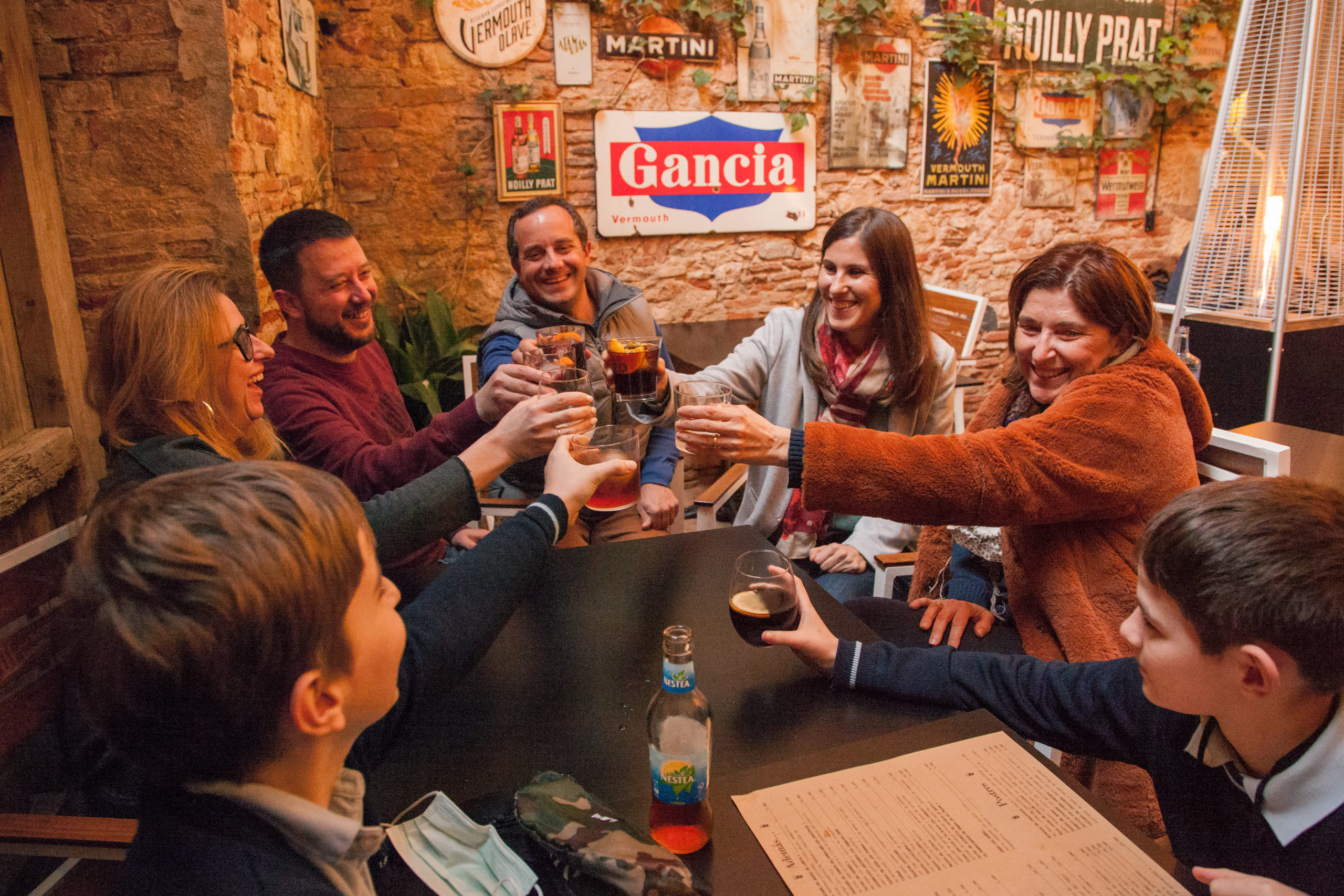
Where to eat in Tarragona and savor the Essence of Reus.
If you’re visiting Tarragona, one of the jewels of the Costa Daurada, a rich and varied culinary experience awaits you. This Catalan region is renowned for its exquisite Mediterranean cuisine, legendary vermouth, and accompanying fantastic wines.
Exceptional Mediterranean Cuisine
In Tarragona, food is a true feast for the senses. The city boasts a unique blend of traditional Catalan dishes and innovative touches. Among the standout restaurants is El Terrat, renowned for its fabulous tasting menu and panoramic city views. L’AQ Restaurant, with its Michelin star, is another must-visit for haute cuisine enthusiasts, with dishes that marry tradition and innovation.
Furthermore, you’ll find excellent options for fresh seafood, like at Restaurant Les Coques, where the region’s fish and shellfish are the specialties. For those looking for something more casual, Tarragona has a myriad of tapas bars to savor delicious bite-sized portions, such as Bar Cortijo, known for its tapas and montaditos.
Discover Oleotourism
In the Tarragona region, you can also immerse yourself in oleotourism, exploring ancient olive groves, learning about olive oil production, and of course, tasting some of the world’s best olive oils. It’s an experience that adds another layer to the region’s rich culinary tapestry.
At La Teva Ruta, we offer various oleotourism tours, where you can also enjoy the charm of the castles and the history of Tarragona, like at Castell d’Escornalbou. A visit you can’t miss.
Book your visit to Castell d’Escornalbou now.
Vermouth Culture in Reus
If you visit Tarragona, a trip to the nearby city of Reus is a must, especially if you’re a vermouth lover. Reus is known as the cradle of vermouth in Spain and is famous for its vermouth route, which takes you through heritage spaces linked to its history, old wineries like Bodega La Parra, and trendy bars. Don’t miss the opportunity to taste vermouth at Vermuts Rofes, an old vermouth factory turned restaurant since 2007. Or, the Vermouth Museum, a restaurant and vermouth bar set in an old modernist workshop, which displays over 6,000 historical objects related to vermouth.
For a deeper experience in the world of vermouth, we recommend the “Vermouth and cuisine in Modernist Reus” tour. This tour combines the best of Reus’s modernist architecture with a vermouth tasting, giving you the chance to know the city’s cultural heritage and its authentic flavors.
Wines of the Region
We can’t discuss Tarragona’s gastronomy without mentioning its fantastic wines. The province is home to several denominations of origin, such as Priorat and Penedès. In Reus, you can enjoy modernist architecture while tasting local wines at places like the historic Bodega La Parra, established in 1955, offering a selection of regional wines, both bottled and in bulk.
Markets and Local Products
Tarragona hosts various markets that are the city’s soul. One of the most prominent is the Mercat Central, a modernist building that’s the perfect place to dive into local flavors. Here you’ll find a wide variety of fresh products, from fruits and vegetables to fish and shellfish.
In Reus, be sure to visit traditional establishments like Colmado Baró, founded in 1918, specializing in bulk dried fruits. Here you can find the authentic hazelnut DO Reus. Or Colmado Giné, offering deli products; in both, you’ll find high-quality and local products. Fancy sweets? You must taste the famous Menjablanc de Reus, a dessert made from almond milk, documented since medieval times. You can find it in bakeries like Confitería Padreny, founded in 1815, Pastisseria Caelles, or Pastisseria Poy.
Mountain Cuisine
Aside from the coast, Tarragona also offers splendid options in the mountain area. In the Prades region, known for its DO Reus hazelnuts and IGP potatoes, you’ll find restaurants like La Fonda Espasa or Tretze Pams, serving excellent mountain cuisine with local products.
More Traditional Sweets
You can’t leave Tarragona without tasting its traditional sweets. The “panellets” are an almond-based delight you can’t miss, especially if you visit during the All Saints’ festival. The “neules” and “iema cremada” nougat are also essential sweets during Christmas.
Experience Tarragona’s Unique Gastronomy
Tarragona invites you to enjoy a culinary experience that goes beyond mere eating. From its Mediterranean cuisine to its famed vermouth and wine, this Catalan region provides a gastronomic experience that will delight your senses. We await you in Tarragona to indulge in our delicacies and discover why our cuisine holds such a special place in the hearts of its residents.
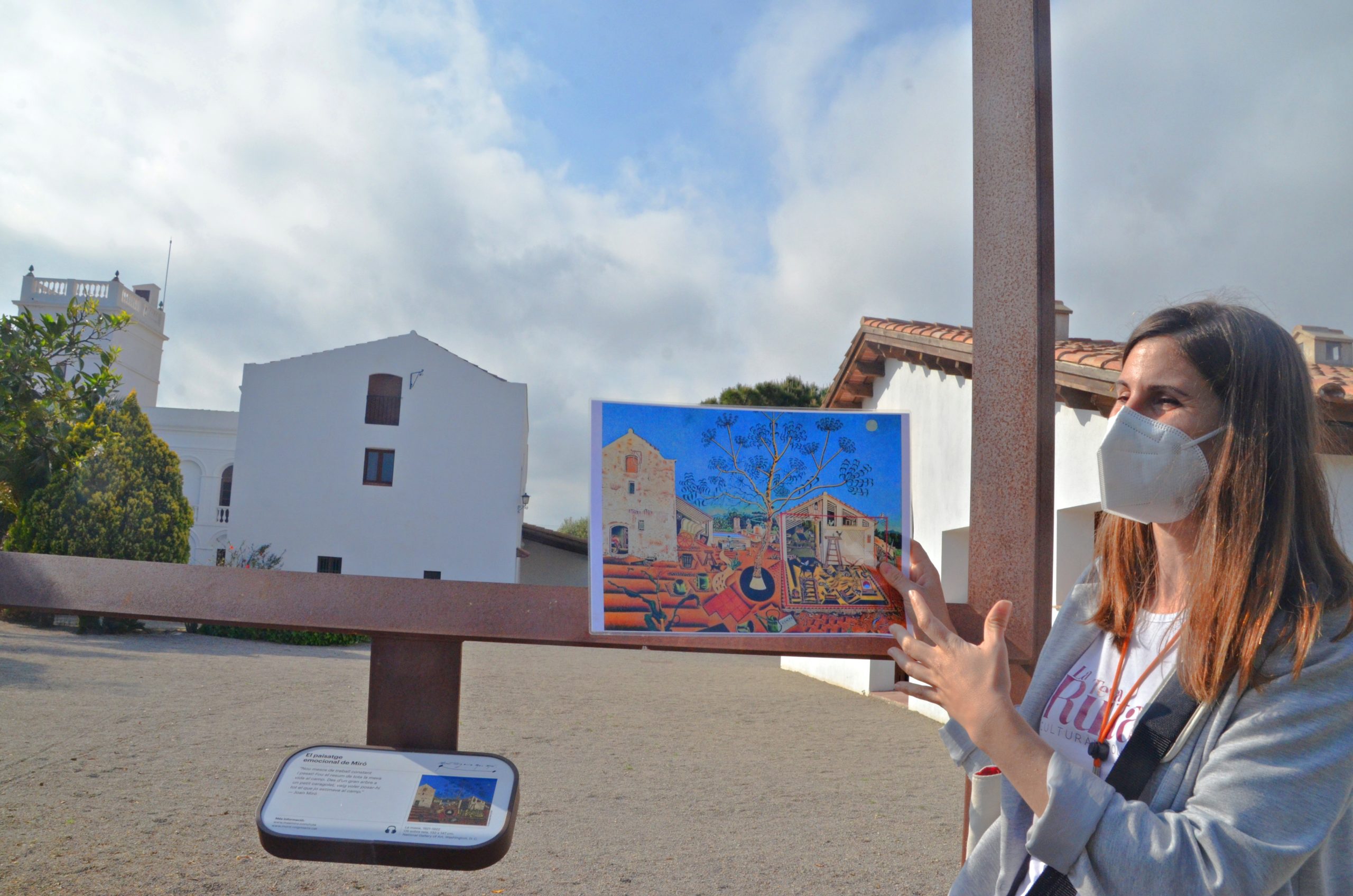
We’re back with our Sketching Tours! This time with a new proposal that takes us to discover the Mas Miró in Mont-roig, the farmhouse where the artist Joan Miró spent his summer holidays from the age of 18 until his 80’s.
The Mas Miró is located in a splendid estate where we find not only the residence but also the employee’s house that Miró painted in his famous work La Masía. We will visit the interior of the Mas, its rooms, the cellar, and the workshop that Miró had built to create his first sculptures. We will talk about his family history, his personality and his artistic universe while you learn about his works created in this place. Throughout the visit, we will invite you to make your own creations using different techniques and materials, some even unusual, such as wine and elements of the earth, with which we will make a work of land art. An experience that will encourage you to experiment and play with art!
The material is included by us and will be previously disinfected and separated by individual or family packs. We follow the safety protocol established by the Mas Miró Mont-roig Foundation.
Minimum 6 people and maximum 12 people
Previous reservation and payment.
Duration: 2,5 hours.
Price: 29€ adults and 22€ children (8-14 years old) and over 65 years old.
Dates: June 26, July 24 and August 21, 2021 at 10:30 (Spanish or Catalan). Consult us for a private tour.
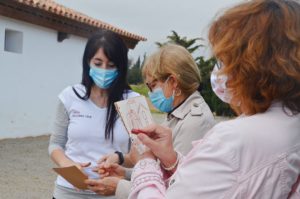
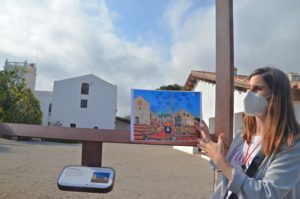
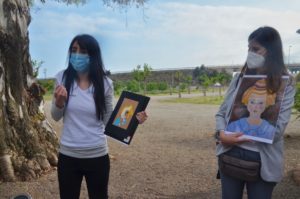
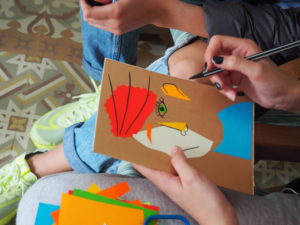
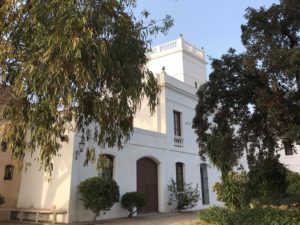

HYGIENE PREVENTION AND SAFETY MEASURES DURING THE GUIDED TOUR
ACCORDING TO THE DOCUMENT “MEASURES TO REDUCE THE SPREAD OF SARS-COVID-2 CORONAVIRUS” OF THE INSTITUTE FOR SPANISH TOURISM QUALITY (ICTE)
– Greetings involving physical contact will be avoided.
– The distribution of printed material such as maps or brochures will be avoided. If this is not possible, the material will be given in plastic form to facilitate cleaning and disinfection.
– The guide will have to carry visible and disinfected his guide’s accreditation.
– It is necessary to maintain the security distance between the guide and the clients and between them during the whole tour. If this is not possible, the guide will wear face mask (or protective screen) and will ask clients to use it as well.
– The use of cash will be avoided and priority will be given to other means: payments will be made previously by transfer. If this is not possible, hands should be disinfected as soon as possible.
– Avoid touching urban surfaces.
– Before giving out educational or complementary material, it will be disinfected with disinfectant towels in the presence of the client.
– Disinfect the hands after coughing or sneezing and discard properly the tissues.
– We avoid areas susceptible to agglomerations.
– Capacity-constrained areas will be avoided. In the case of the tour “Vermouth and shops with history”, we will enter the stores as long as their capacity allows us. If it is not possible to enter at that time, the explanation will be given from the outside and then, we enter one by one if necessary.
– In those guided visits which include the entrance to a restaurant, we will follow the prevention protocol it that applies.
– A maximum of 15 visitors will be established in the same group.
– Before starting the visit, the guide will remind you of these preventive measures.

HYGIENE PREVENTION AND SAFETY MEASURES DURING THE GUIDED TOUR
ACCORDING TO THE DOCUMENT “MEASURES TO REDUCE THE SPREAD OF SARS-COVID-2 CORONAVIRUS” OF THE INSTITUTE FOR SPANISH TOURISM QUALITY (ICTE)
– Greetings involving physical contact will be avoided.
– The distribution of printed material such as maps or brochures will be avoided. If this is not possible, the material will be given in plastic form to facilitate cleaning and disinfection.
– The guide will have to carry visible and disinfected his guide’s accreditation.
– It is necessary to maintain the security distance between the guide and the clients and between them during the whole tour. If this is not possible, the guide will wear a face mask (or protective screen) and will ask clients to use it as well.
– The use of cash will be avoided and priority will be given to other means: payments will be made previously by transfer. If this is not possible, hands should be disinfected as soon as possible.
– Avoid touching urban surfaces.
– Before giving out educational or complementary material, it will be disinfected with disinfectant towels in the presence of the client.
– Disinfect the hands after coughing or sneezing and discard properly the tissues.
– We avoid areas susceptible to agglomerations.
– Capacity-constrained areas will be avoided. In the case of the tour “Vermouth and shops with history”, we will enter the stores as long as their capacity allows us. If it is not possible to enter at that time, the explanation will be given from the outside and then, we enter one by one if necessary.
– In those tours where the entrance to a restaurant is included, we will follow their prevention measures.
– A maximum of 15 visitors will be established in the same group.
– Before starting the visit, the guide will remind you of these preventive measures.
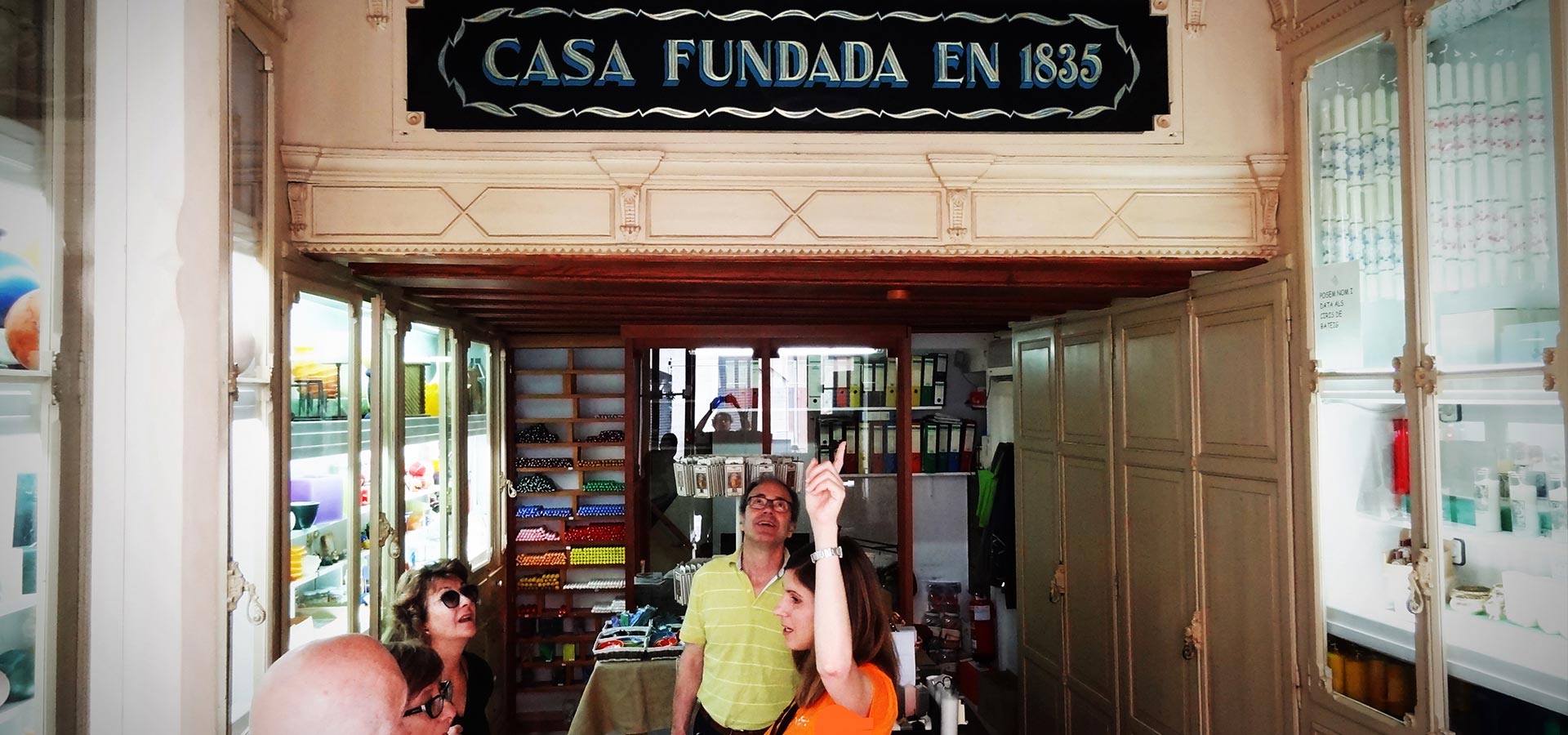
Months of June, July and August every Thursday (catalan/english) and every Friday (spanish/english) at 6pm
Rest of the year every Friday at 6pm (catalan or spanish/english)
Reus became the second largest city in Catalonia in the 18th and 19th centuries due to its industrial and commercial activity, based on liquors, spirits and vermouths, the textile industry and its proximity trade. Its elegant streets and modernist buildings of the nineteenth-century bourgeoisie are proof of that glorious time.
Its numerous and attractive shops have positioned the town as the commercial capital of the province of Tarragona. Examples of the importance of its traditional commercial activity are the various historical and centenarian shops that are still persevered.
With this tour we will learn about the modern history of Reus, linked to these economic activities, trade and vermouth, as well as the history of its oldest shops: their decoration, their protagonists, their anecdotes and curiosities. We will discover small museums of everyday life and the vitality of one of the most beautiful cities in Catalonia.
Itinerary
The tour begins in the Plaça del Mercadal, the site of the old market since medieval times. We will visit 7 historical shops of different kinds, including a wine cellar and a grocery store where we will go in depth into the culture and history of the Vermouth of Reus, a product we will also taste.

